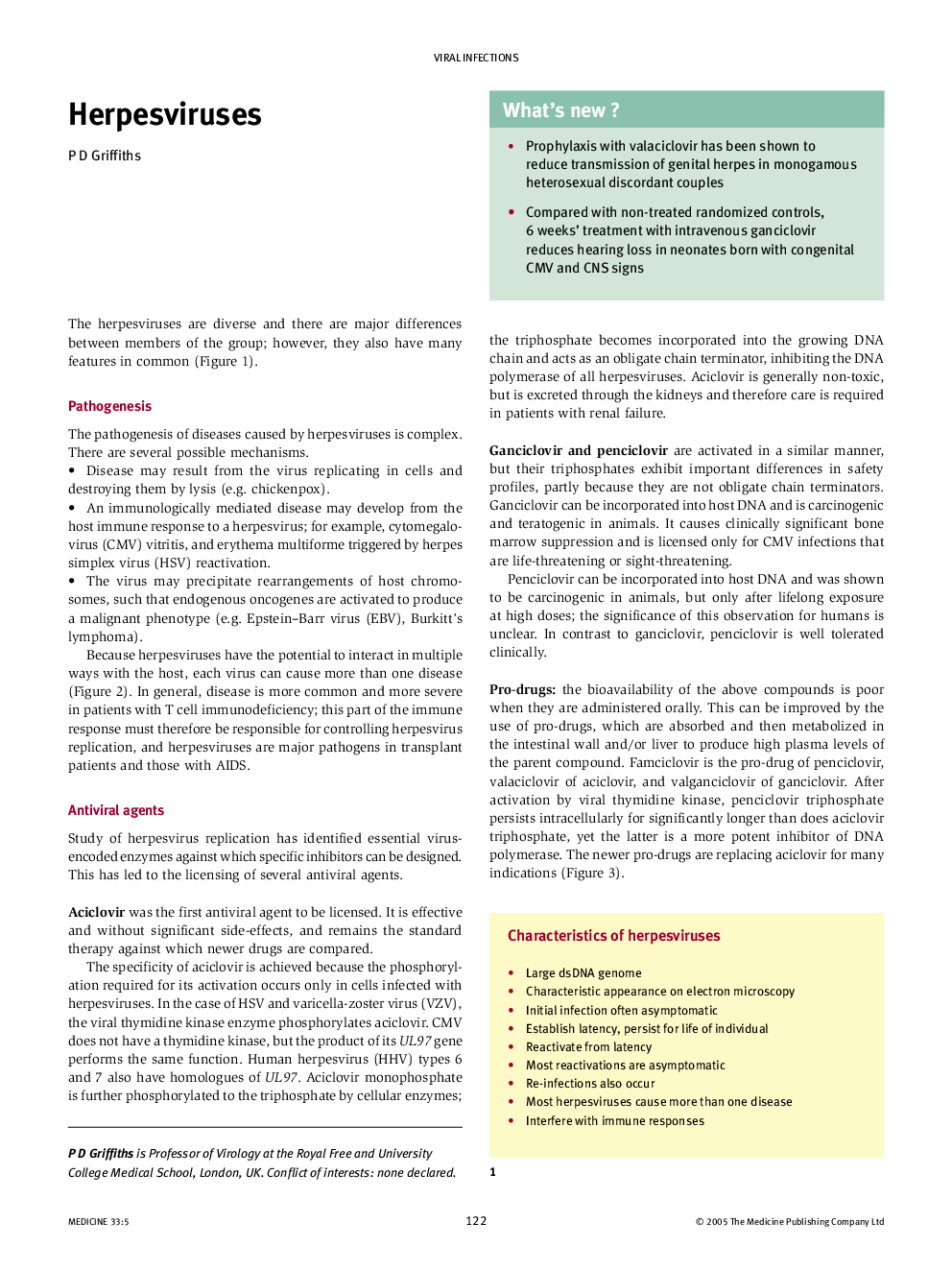| Article ID | Journal | Published Year | Pages | File Type |
|---|---|---|---|---|
| 9299637 | Medicine | 2005 | 4 Pages |
Abstract
Herpesviruses share many characteristics ' they look similar on electron microscopy, initial infection usually gives no symptoms, they establish latency and persist for the life of the individual, and they reactivate from latency, thereby transmitting to others. Each herpesvirus causes more than one disease, because the age of the patient and their immune response moderate their inherent pathogenicity. Some herpesviruses cause disease by destroying cells; others cause the immune system to overreact, causing infectious mononucleosis. Cytomegalovirus (CMV) and herpes simplex virus (HSV) trigger immunologically mediated pathology (graft rejection and erythema multiforme, respectively). Some herpesviruses interact with HIV to cause Kaposi's sarcoma or accelerate the rate at which HIV causes AIDS and death. In addition, micro-ulcers in the genital area caused by recurrent HSV2 facilitate sexual acquisition of HIV. Epstein-Barr virus and human herpesvirus 8 possess additional genes that interfere with the cell cycle, causing cancer. Active infection with many herpesviruses can now be prevented by prophylactic or therapeutic use of antiviral drugs. Aciclovir is safe because it circulates in the extracellular fluid as an inert molecule and is activated only in virus infected cells. Oral bioavailability is improved with the pro-drug valaciclovir. Famciclovir is the pro-drug of penciclovir and valganciclovir is the pro-drug of ganciclovir. A live attenuated vaccine has been licensed against varicella-zoster virus and is being used for universal immunization in the USA and selective immunization of non-immune adults in the UK. Experimental recombinant vaccines against HSV2 and CMV are in clinical trials.
Keywords
Related Topics
Health Sciences
Medicine and Dentistry
Medicine and Dentistry (General)
Authors
PD Griffiths,
